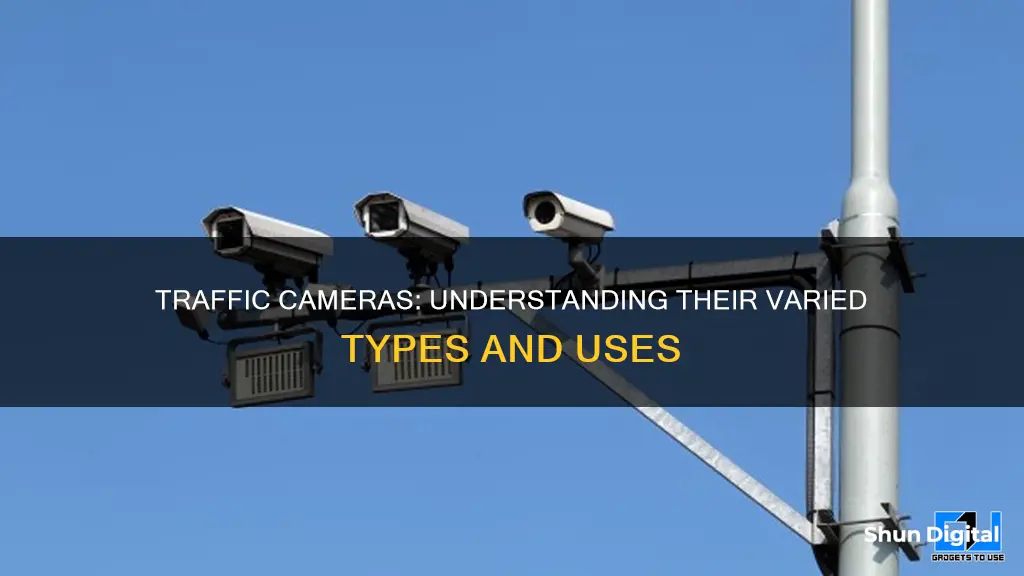
Traffic cameras are an increasingly common sight on roads across the world. While some people feel that they invade their privacy, they are an important tool for monitoring traffic flow and improving road safety. There are several different types of traffic cameras, each with its own distinct purpose. The most common type is the traffic sensor camera, which is usually installed on top of traffic signals or mounted on light poles to measure traffic flow and determine the timing of traffic signals. Then there are automated number plate recognition (ANPR) cameras, which use AI to read license plate numbers and track the whereabouts of drivers. Red light cameras are placed at busy intersections to detect when a motorist enters on a red light and automatically issue tickets for violations. Speed cameras are similar but monitor speeding violations instead of red-light violations. Finally, there are stop sign cameras, which use radar to detect if vehicles stop, roll through, or drive past a stop sign.
| Characteristics | Values |
|---|---|
| Purpose | Traffic monitoring, law enforcement, safety, revenue generation |
| Camera Type | Red-light, speed, average speed, mobile speed, automatic number plate recognition, traffic-sensor |
| Mounting | Traffic lights, signal poles, roadside, overhead gantries, van, portable structures, police vehicles |
| Power Source | Mains power, solar panels, alternative power sources |
| Camera Features | Infrared light, radar, LIDAR, Doppler radar, stereo vision |
| Detection | Speed, red-light violations, number plate recognition, traffic flow, congestion |
| Use Cases | Highways, freeways, expressways, arterial roads, tunnels, cities, construction zones |
| Privacy Concerns | Loss of privacy, mass surveillance, government overreach |
What You'll Learn

Red light cameras
In terms of their operation, red light cameras work in conjunction with sensors installed on the road. When a vehicle crosses the stop line during a red light, the sensors trigger the camera to capture images or video footage. A law enforcement official will then review the evidence and determine if a violation occurred. If a violation is confirmed, a citation or ticket is typically mailed to the owner of the vehicle.
The use of red light cameras has been associated with a reduction in fatal red light running crash rates and the overall rate of fatal crashes at signalized intersections. However, there are mixed results regarding the impact on overall collision rates, as some studies suggest an increase in rear-end collisions due to drivers abruptly stopping to avoid a ticket.
The implementation of red light cameras is a highly debated topic, with supporters citing improved road safety and opponents expressing concerns about privacy and financial motivations. Nevertheless, they remain a common tool for traffic enforcement worldwide.
Exploring Adobe Camera Raw: Redo Functionality
You may want to see also

Traffic sensor cameras
These cameras are distinct from red light and speed cameras, which are used for automated ticket issuance and enforcement. Traffic sensor cameras are positioned on the traffic light or signal itself, whereas red light and speed cameras are mounted on separate poles at the side of the road.
Concealing Outdoor Cameras: Stealthy Surveillance Techniques
You may want to see also

Automated number plate recognition cameras
Automated Number Plate Recognition (ANPR) cameras are a highly advanced technology that uses optical character recognition on images to read vehicle registration plates and create vehicle location data. ANPR cameras are combined with artificial intelligence, allowing them to read license plate numbers accurately and instantaneously. This technology is used by police forces worldwide to increase public safety and civil security, and for various purposes such as border and toll controls.
ANPR cameras can be either mobile, mounted on police cruisers, or fixed, mounted on poles or traffic lights. They are not tied to any automated ticket-issuing system but are primarily used for tracking the whereabouts of drivers and vehicles. Mobile ANPR cameras are always recording and can automatically scan and cross-reference license plates with government databases, helping police officers identify vehicles with outstanding warrants or other issues.
ANPR cameras use infrared lighting to capture clear images of license plates at any time of day or night. They can cope with various plate variations, including international differences, and can differentiate between vehicle classes such as passenger cars, vans, lorries, buses, and motorcycles.
The use of ANPR cameras has raised privacy concerns, with critics arguing that it constitutes mass surveillance and enables government tracking of citizens' movements. However, ANPR technology has been proven to enhance road safety, reduce crashes, and save lives.
Overall, Automated Number Plate Recognition cameras are an advanced tool that assists law enforcement and improves road safety by accurately capturing and recognising vehicle license plates.
Snap Camera Stuck in Portrait Mode: What to Do?
You may want to see also

Speed cameras
There are two types of speed cameras: fixed and mobile. Fixed speed cameras are usually mounted on elevated poles by the side of the road and are easy to spot due to their bulky weatherproof enclosures and external flashes. Mobile speed cameras, on the other hand, are not permanently mounted and can be located on a tripod or inside a van. They are more challenging to notice and are often moved around.
- Digital Gatso speed cameras: These cameras use radar technology to detect speeding vehicles and capture two quick successive images to calculate the vehicle's speed using white lines painted on the road. They are rear-facing to avoid blinding drivers with their flash.
- Truvelo Combi speed cameras: These cameras are forward-facing and use infrared technology instead of a flash to capture images.
- Truvelo D-Cam speed cameras: An updated version of the Truvelo Combi, these cameras use similar technology but are both front and rear-facing.
- HADECS speed cameras: HADECS stands for Highway Agency Digital Enforcement Camera System. They are commonly used on smart motorways and can record up to five lanes of traffic.
- SPECS average speed camera: SPECS were the first cameras in the UK to enforce an average speed restriction. They use video and Automatic Number Plate Reading (ANPR) technology to record drivers' speeds over a set distance.
- Siemens SafeZone average speed camera: These cameras are commonly used in towns, cities, and villages and employ the same ANPR technology as SPECS cameras.
- SpeedSpike average speed cameras: This newer system links up to 1,000 separate cameras to monitor an area 24 hours a day and can catch speeding drivers in both directions.
- SpeedCurb speed cameras: These are often mounted high up and are considered one of the tallest speed cameras.
- REDFLEX speed cameras: These cameras can monitor multiple offending vehicles at the same junction and have two types: REDFLEXred for monitoring traffic light offences and REDFLEXspeed for monitoring up to six lanes of traffic on a motorway.
Editing Midtones in Camera Raw: A Step-by-Step Guide
You may want to see also

Stop sign cameras
While stop sign cameras are not as common as red light or speed cameras, they are becoming increasingly prevalent in the United States. As of 2024, only California and the District of Columbia have stop sign cameras listed on their official Department of Transportation (DOT) websites. However, other states and local governments are also considering or implementing stop sign camera programs. For example, New York State has proposed the "Protect Our Pedestrians (POP) Act," which would allow certain villages in Nassau and Suffolk counties to install stop sign cameras to enhance pedestrian and bicyclist safety.
In terms of functionality, stop sign cameras typically capture multiple photographs or video clips of vehicles that fail to stop at the sign. These images or videos can be used as evidence to issue citations or fines to the vehicle owner or operator. The use of stop sign cameras can also help law enforcement officers by providing clear evidence of traffic violations, reducing the need for dangerous pursuits or confrontations.
Overall, stop sign cameras are an important tool for enforcing traffic laws and improving road safety, particularly at intersections with stop signs.
Choosing the Right Camera Profile for Your RAW Photos
You may want to see also
Frequently asked questions
There are two main classifications of traffic cameras: cameras that issue tickets and violations (automated traffic enforcement cameras), and cameras that monitor traffic speeds and conditions (non-enforcement cameras).
Red light cameras, speed cameras, and bus lane cameras.
Traffic sensor cameras and automated number plate recognition (ANPR) cameras.
Red light cameras are usually placed at busy intersections in urban areas.
ANPR cameras use artificial intelligence to read license plate numbers and track the whereabouts of drivers.







